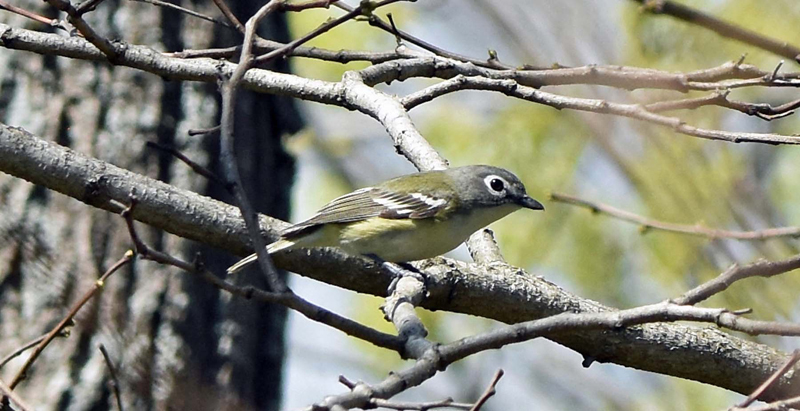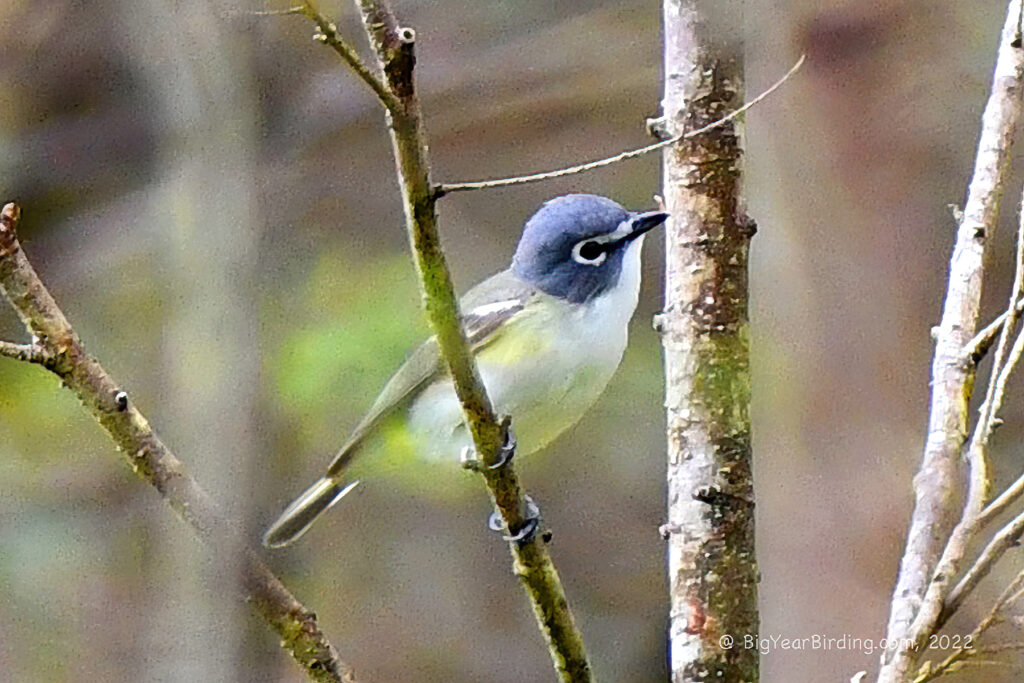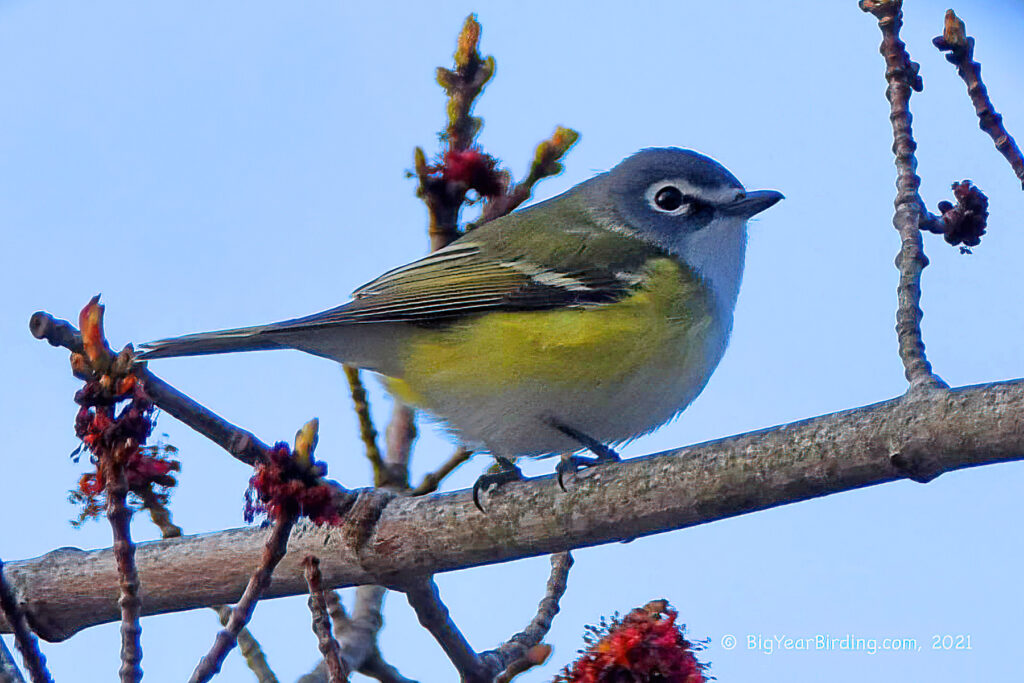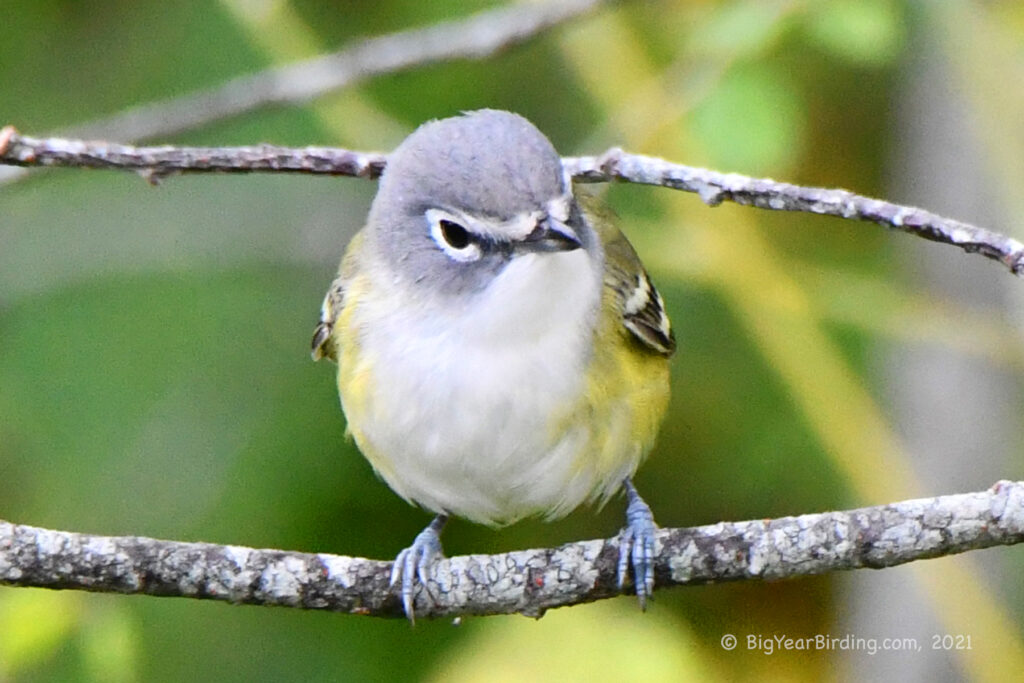The Blue-headed Vireo (Vireo solitarius) is a small passerine bird that belongs to the Vireonidae family. It is a common bird species in North America that breeds in the eastern part of the continent and winters in Central America and the Caribbean islands. Blue-headed Vireos are approximately 5.5 inches long and have a wingspan of about 8.5 inches. They weigh between 0.3 to 0.5 ounces.

The Blue-headed Vireo is a distinctive bird with a blue-gray head and a white eyebrow that extends from the base of the bill to the nape of the neck. It has a greenish-yellow body, gray wings, and two white wing bars. The bill is small and pointed, and the legs are gray. The Blue-headed Vireo’s plumage changes during its migration; in the summer, the blue-gray head is brighter, and the body has a more olive tint, while in the winter, the colors are muted.
During migration, Blue-headed Vireos travel long distances from their breeding grounds in the northeastern United States and southern Canada to their wintering range in Central America and the Caribbean. In the fall, they migrate through the eastern United States to reach their wintering grounds, and in the spring, they return to their breeding range. Blue-headed Vireos are also known for their distinctive singing, which sounds like a series of whistled notes that rise and fall in pitch.
Blue-headed Vireos are primarily insectivorous and feed on insects, spiders, and caterpillars. They forage in the middle to upper levels of trees and shrubs, where they glean insects from foliage or catch them in mid-air. During the winter, they also consume fruits and berries.

In conclusion, the Blue-headed Vireo is a small, distinctive bird with a blue-gray head and white eyebrow. It is a common bird species in North America that breeds in the eastern part of the continent and winters in Central America and the Caribbean islands. It is approximately 5.5 inches long and weighs between 0.3 to 0.5 ounces. Blue-headed Vireos migrate long distances during the fall and spring and are known for their whistled singing. They primarily feed on insects, spiders, and caterpillars during the breeding season, and also consume fruits and berries during the winter.


